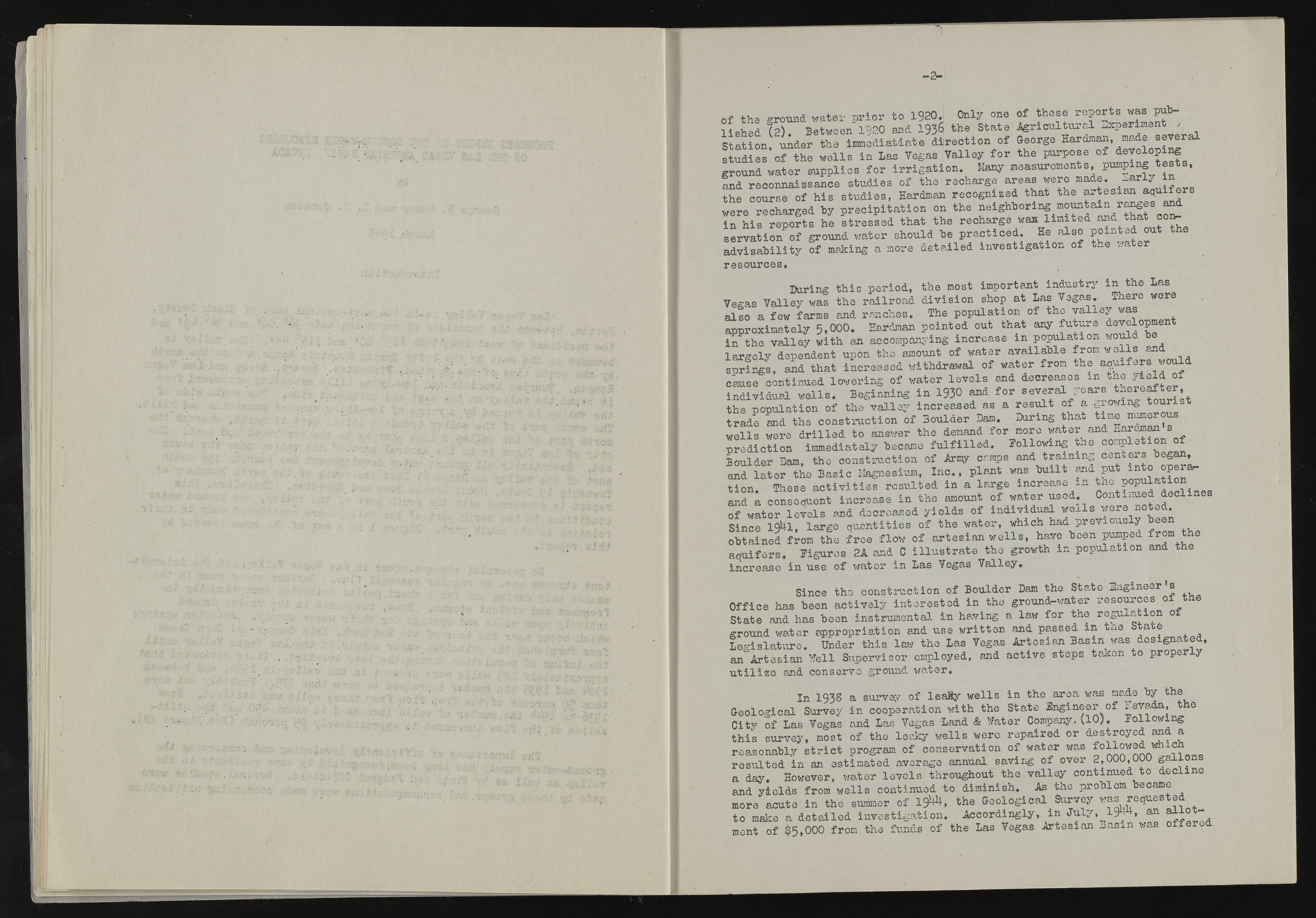Copyright & Fair-use Agreement
UNLV Special Collections provides copies of materials to facilitate private study, scholarship, or research. Material not in the public domain may be used according to fair use of copyrighted materials as defined by copyright law. Please cite us.
Please note that UNLV may not own the copyright to these materials and cannot provide permission to publish or distribute materials when UNLV is not the copyright holder. The user is solely responsible for determining the copyright status of materials and obtaining permission to use material from the copyright holder and for determining whether any permissions relating to any other rights are necessary for the intended use, and for obtaining all required permissions beyond that allowed by fair use.
Read more about our reproduction and use policy.
I agree.Information
Digital ID
Permalink
Details
Member of
More Info
Rights
Digital Provenance
Publisher
Transcription
of the ground water prior to 1920.: Only one of these reports was published (2). Between 1920 and 193$ the State Agricultural experiment , Station' under the immediatdate direction of George Hardman, made several studies'ofthe wells in Ins Veeas Talley for the purpose of developing ground water supplies for Irrigation. Many measurements, pumping tests, and reconnaissance studies of the recharge areas were made. ^arly in the course of his studies, Hardman recognized that tne artesian aquifers were recharged by precipitation on the neighboring mountain ranges and In his S ^ f t s he stressed that the recharge warn limited and that conservation^ of ground water should he practiced He also pointed J i t the advisability of making a more detailed investigation of the wate resources. During this period, the most important industry in the Las Vegas Valley was the railroad division shop at Las Vegas.- There wore also a few farms and ranches. The population of the valley was approximately 5,000. Hardman pointed out that any future development in the valley with an accompanying increase ^population would be largely dependent upon the amount of water available from wells and s " i S , Increased withdrawal of water from the apulfers would cause continued lowering of water levels and decreases in the yield of individual wells. Beginning in 1930 and for several years thereafter, the population of the valley increased as a result of a ,-ang tourist trade and the construction of Boulder Dam. • During that time numerous wells were drilled to answer the demand for more water and nardman s prediction immediately became fu lfilled . Following the completion of Boulder Dam, the construction of Army camps and training cenueio began, Z later the Basic Magnesium, I n c , plant was built and put into opera, tion These activities resulted in a large increase in tne population liS ; consequent increase in the amount of water used O o n t M ^ n e s of water levels and decreased yields of individual wells x^rere noted. Since 19U1, large quantities of the water, which had previously been obtained from the free flow of artesian wells, have been pumped fr °m *he aquifers. Figures 2A and C illustrate the growth m population and the increase in use of water in Las Vegas Valley. Since the construction of Boulder Dam the State Engineer s Office has been actively interested in the ground-water resources of the State and has been instrumental in having a law for the r e la t io n o ground water appropriation and use written and passed in tne State Legislature. Under this law the Las Vegas Artesian Basin was designated, an Artesian Well Supervisor employed, and active steps taken to properly utilize and conserve ground water. In 1938 a survey of leaky wells in the area was made by the Geological Survey in cooperation with the State Engineer of reyada, e Citv of Las Vegas and Las Vegas Land & Water Company. (10), Following this survey, most of the leaky wells were repaired or destroyed and a reasonably strict program of conservation of water was resulted in an estimated average annual saving of over 2,000,000 gallons a day. However, water levels throughout the valley continued to decline and yields from wells continued to diminish. As the problem became _ more acute in the summer of 1 ^ , the Geological Survey Requested _ to make a detailed investigation. Accordingly, in July, 1 9 ^ . an *1 ® ment of $5,000 from the funds of the Las Vegas Artesian Basin was offer©

